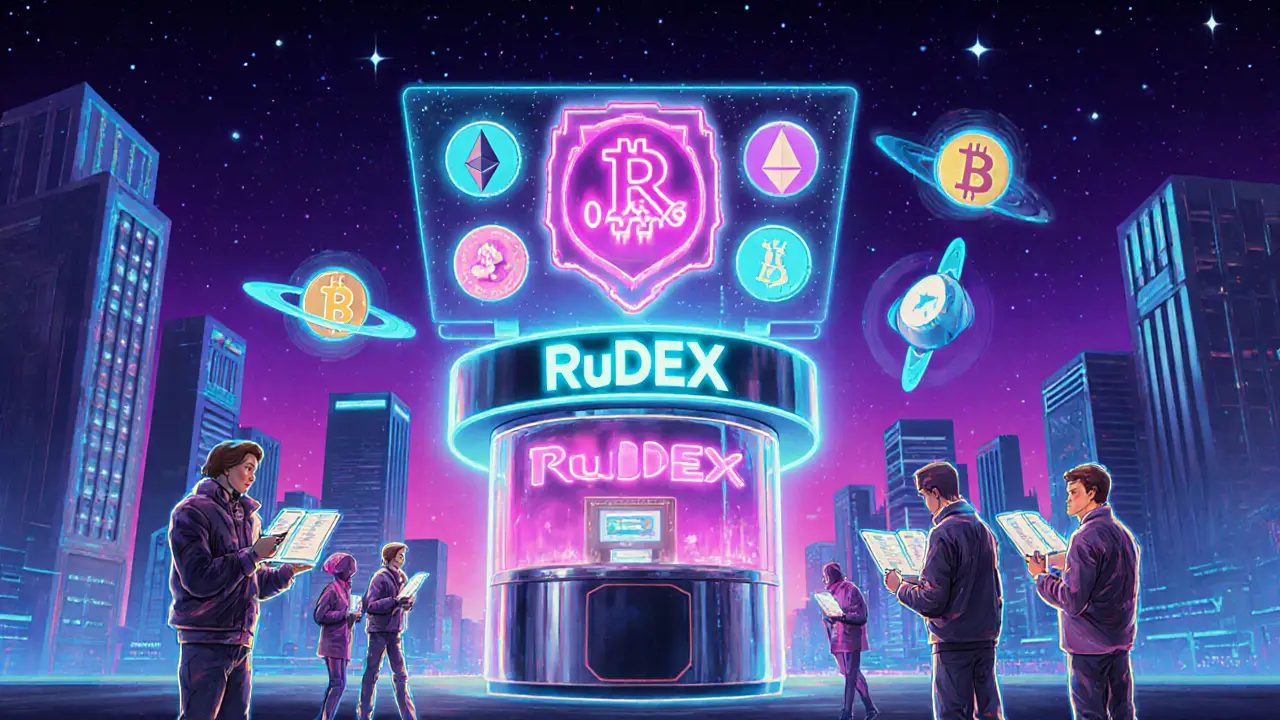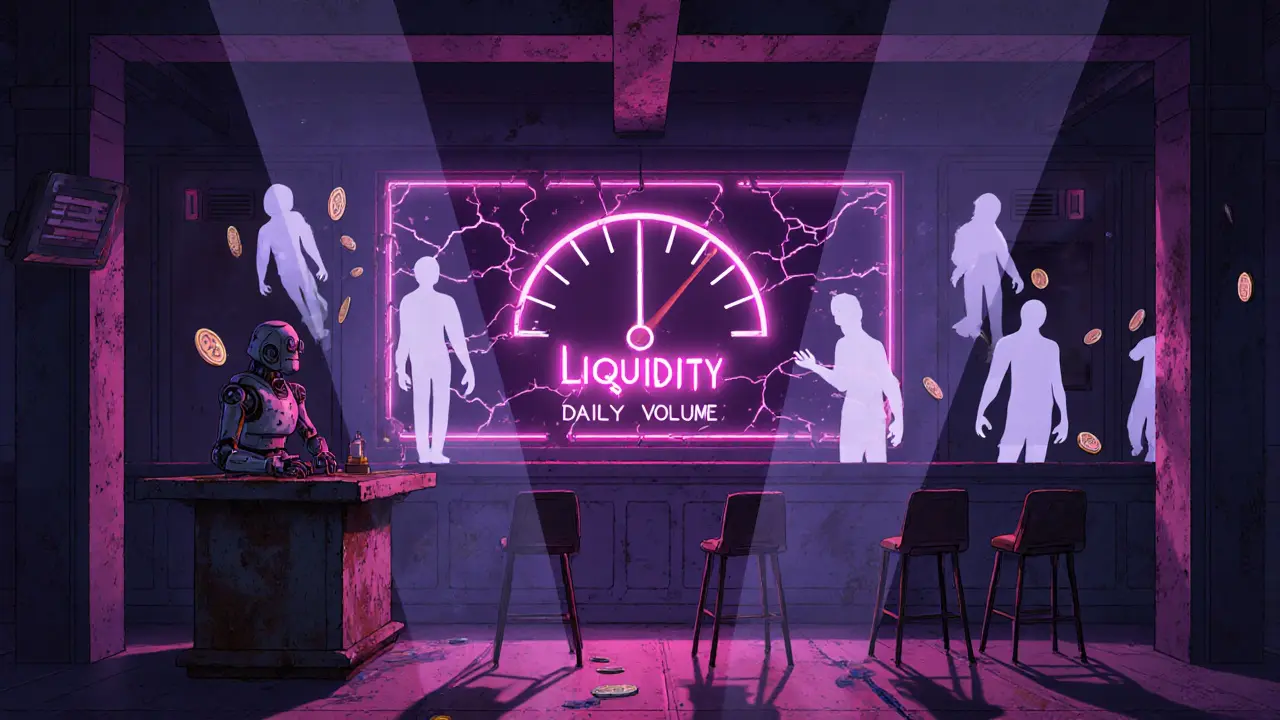RuDEX Crypto Exchange Review 2025: Fees, Liquidity & Safety
 Sep, 18 2025
Sep, 18 2025
RuDEX Fee Calculator
Fee Calculation Result
Enter a trade amount and select a pair to calculate fees.
Key Takeaways
- RuDEX offered some of the lowest trading fees in the industry, down to 0.05% for major pairs.
- Liquidity collapsed to under $1,200 daily by 2023, making order execution unreliable.
- The platform never supported fiat deposits, limiting it to users who already owned crypto.
- Security featured standard encryption and MFA, but the lack of regulatory oversight posed a risk.
- Since March 2023 the original exchange is effectively dead; the website now runs a swap aggregator for over 1,600 tokens.
When you type "RuDEX review" into a search box, you expect a clear picture: is this exchange still usable, and does it deliver on its low‑fee promise? The short answer is no - the original RuDEX exchange stopped processing trades in early 2023, and its remaining service is a token‑swap tool rather than a full‑featured exchange. This article breaks down the history, fee structure, liquidity, security, and alternatives so you can decide whether the RuDEX brand matters for you today.
RuDEX is a cryptocurrency exchange that launched in April 2017 and was headquartered in Russia. Despite the "DEX" suffix, it operated as a centralized platform built on the BitShares blockchain, using BitShares gateways for deposits and withdrawals.
What RuDEX Was Designed to Do
The exchange’s core value proposition was simple: ultra‑low fees and a focus on smaller, often overlooked coins. At launch it supported 14 coins across 28 trading pairs, including Bitcoin (BTC) and Ethereum (ETH). For traders who wanted cheap access to niche assets, RuDEX looked attractive.
Fee Structure - How Low Could It Go?
RuDEX’s fee schedule was one of the most aggressive in the market. Trading fees were 0.05% for pairs involving BTC, ETH, Dash, Peercoin and Gridcoin. All other crypto‑to‑crypto pairs carried a 0.00% fee, with only the underlying BitShares network fee applied. Compared with the industry average of about 0.25% and Binance’s 0.10% standard fee, RuDEX was up to five times cheaper.
Withdrawal fees were equally tight: 0.0005 BTC per Bitcoin withdrawal, roughly 40% lower than the global average of 0.0008 BTC. This meant a user could move funds out of the platform without eroding profits as quickly as on larger exchanges.
RuDEX review often highlights these numbers, but fee savings disappear the moment a trade can’t be filled because of thin liquidity.
Liquidity - The Achilles Heel
Liquidity is the lifeblood of any exchange. In March 2023, Cryptowisser reported a 24‑hour trading volume of just USD 1,196.71. By comparison, Binance handled over $40 billion daily. Such a low volume translates to deep order‑book gaps; even modest market orders could slip dramatically, leaving traders with unexpected slippage.
The lack of fiat on‑ramps compounded the issue. New investors had to acquire crypto elsewhere before they could even deposit on RuDEX, creating an extra barrier that many competitors eliminated with credit‑card and bank‑transfer options.

Security & Regulatory Landscape
Security-wise, RuDEX employed industry‑standard SSL encryption and mandatory multi‑factor authentication (MFA) via email or mobile codes. However, the platform never disclosed a clear regulatory jurisdiction. The absence of a licensing framework meant users had little recourse if the exchange froze assets or vanished.
Because the exchange relied on the BitShares network for settlement, any instability or attack on BitShares could cascade into RuDEX. While no major breach was publicly reported, the dependency added an extra layer of risk that most major exchanges mitigate by using multiple custodial solutions.
Customer Support - Mixed Signals
Early user reviews praised 24/7 live chat support, but later reports (including a scathing Fxmerge post) described unresponsive help desks and even accusations of a scam. The decline in support quality paralleled the drop in trading volume, suggesting that as the platform lost relevance, its service team also shrank.
Current State - From Exchange to Swap Service
By early 2023, the exchange interface was effectively dormant. The website remained live, rebranded as "RUDEX swap" - a non‑custodial aggregator that lets users swap over 1,600 tokens without registration. This shift mirrors a trend where defunct exchanges pivot to swapping or bridging services to keep the domain alive.
For anyone looking to trade on RuDEX today, the short answer is: you can’t. The original order‑matching engine is offline, and the swap tool does not offer order‑book depth, advanced charting, or fiat gateways.

How RuDEX Stacks Up Against Modern Alternatives
| Feature | RuDEX (original) | Binance | Kraken | Coinbase |
|---|---|---|---|---|
| Trading Fees (major pairs) | 0.05% | 0.10% | 0.16%‑0.26% | 0.50%‑0.80% |
| Daily Volume (USD) | ~1,200 | 40 B+ | 1 B+ | 3 B+ |
| Supported Coins | 14‑30 | 350+ | 200+ | 250+ |
| Fiat Deposits | No | Yes (30+ currencies) | Yes (20+ currencies) | Yes (25+ currencies) |
| Regulatory Status | Unclear | Multiple licences (Malta, Cayman) | US, EU licences | US, EU, UK licences |
| Security Features | SSL + MFA | SSL + MFA + SAFU | SSL + MFA + Cold storage | SSL + MFA + FDIC insured USD balances |
| Current Status (2025) | Swap aggregator only | Active | Active | Active |
Who Might Still Find RuDEX Useful?
For a handful of ultra‑experienced traders who already own crypto, need to move a small amount, and value ultra‑low fees above all, the swap service can be handy. It offers instant token‑to‑token swaps without registration, which is useful for privacy‑focused users. However, because the service relies on third‑party liquidity providers, traders lose the control and guaranteed execution that a traditional order book offers.
If you are new to crypto, need fiat on‑ramps, or seek reliable customer support, you’re better off choosing a regulated platform such as Binance, Kraken, or Coinbase.
Practical Tips If You Still Want to Use the RUDEX Swap
- Visit rudex.org and click the "Swap" tab.
- Select the source token and the target token. The UI supports over 1,600 assets, but most liquidity resides in top‑10 coins.
- Enter the amount you wish to swap. Double‑check the displayed exchange rate and network fee.
- Confirm the transaction. You will be redirected to a third‑party aggregator (often 1inch or Paraswap) to finalize the swap.
- Wait for the transaction receipt on the source blockchain. No account is created; the swap is purely on‑chain.
Always keep a small amount of the source token to cover gas fees, especially on Ethereum where fees can spike.
Final Verdict
RuDEX started with a clear niche - cheap trades for lesser‑known coins - and delivered on the fee front. Yet the platform never built the liquidity, fiat support, or regulatory foundation needed to survive the market’s consolidation. By 2023 it was effectively dead as a traditional exchange, and today it lives only as a token‑swap front‑end. For most users, the safe path is to skip RuDEX entirely and opt for a high‑volume, regulated exchange. If you only need a quick, no‑account swap for a token you already hold, the RUDEX swap tool can do the job, but it’s not a replacement for a full exchange.
Is RuDEX still operational as an exchange?
No. The original RuDEX exchange stopped processing trades in early 2023 due to extremely low liquidity. The website now only offers a token‑swap service.
What were RuDEX’s trading fees compared to other exchanges?
RuDEX charged 0.05% on major pairs and 0.00% on many other crypto‑to‑crypto pairs, which is significantly lower than Binance’s 0.10% and Kraken’s 0.16%‑0.26%.
Can I deposit fiat on RuDEX?
No. RuDEX was a crypto‑only platform. Users needed existing cryptocurrency to deposit.
Is the RUDEX swap service safe?
The swap uses reputable aggregators like 1inch, but because there’s no custodial control, you rely on the underlying blockchain’s security and the third‑party liquidity sources.
Which exchange should I use instead of RuDEX?
For most traders, Binance, Kraken, or Coinbase offer better liquidity, fiat on‑ramps, and regulatory protection.